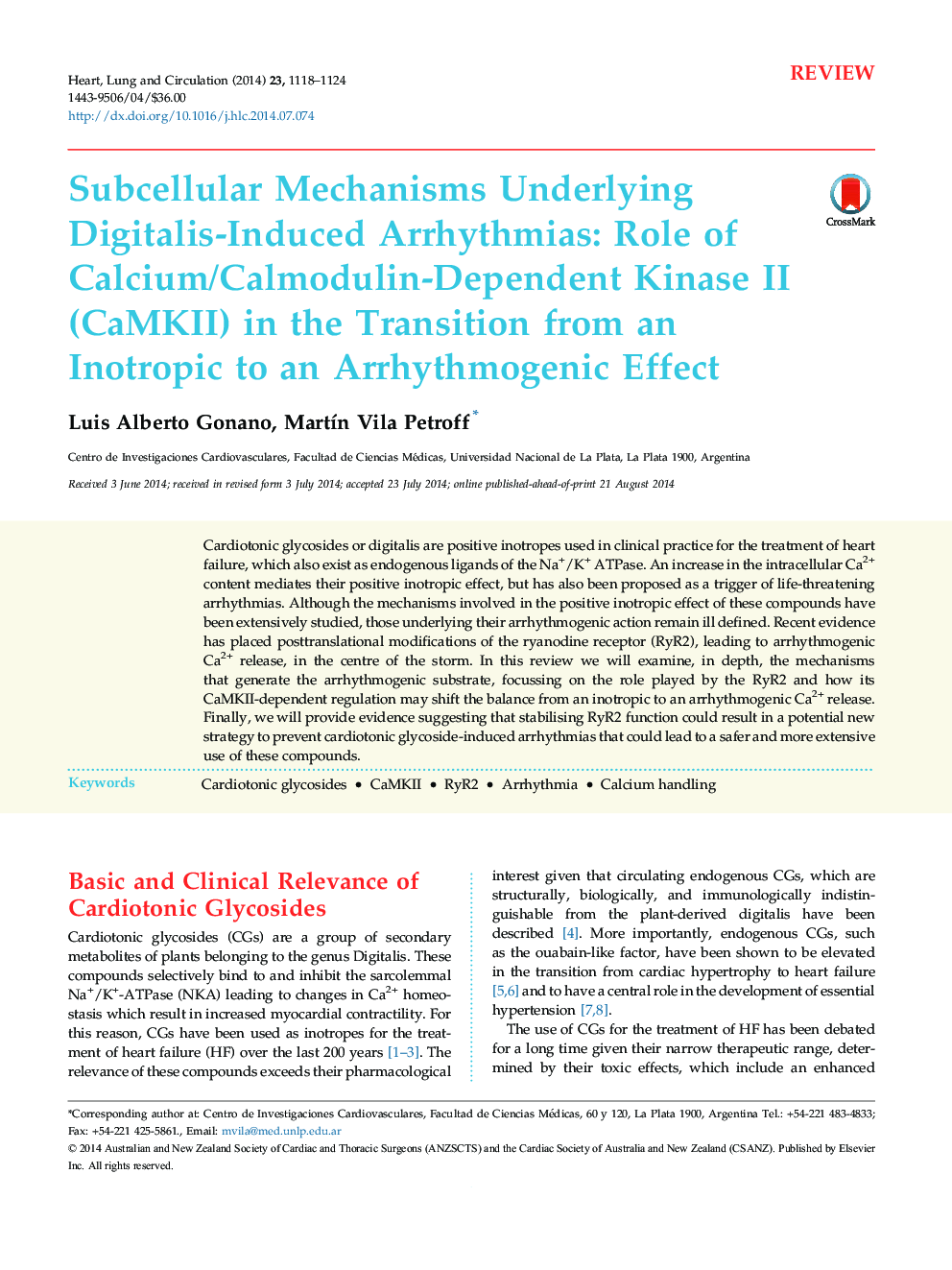| کد مقاله | کد نشریه | سال انتشار | مقاله انگلیسی | نسخه تمام متن |
|---|---|---|---|---|
| 2916902 | 1175650 | 2014 | 7 صفحه PDF | دانلود رایگان |

Cardiotonic glycosides or digitalis are positive inotropes used in clinical practice for the treatment of heart failure, which also exist as endogenous ligands of the Na+/K+ ATPase. An increase in the intracellular Ca2+ content mediates their positive inotropic effect, but has also been proposed as a trigger of life-threatening arrhythmias. Although the mechanisms involved in the positive inotropic effect of these compounds have been extensively studied, those underlying their arrhythmogenic action remain ill defined. Recent evidence has placed posttranslational modifications of the ryanodine receptor (RyR2), leading to arrhythmogenic Ca2+ release, in the centre of the storm. In this review we will examine, in depth, the mechanisms that generate the arrhythmogenic substrate, focussing on the role played by the RyR2 and how its CaMKII-dependent regulation may shift the balance from an inotropic to an arrhythmogenic Ca2+ release. Finally, we will provide evidence suggesting that stabilising RyR2 function could result in a potential new strategy to prevent cardiotonic glycoside-induced arrhythmias that could lead to a safer and more extensive use of these compounds.
Journal: Heart, Lung and Circulation - Volume 23, Issue 12, December 2014, Pages 1118–1124